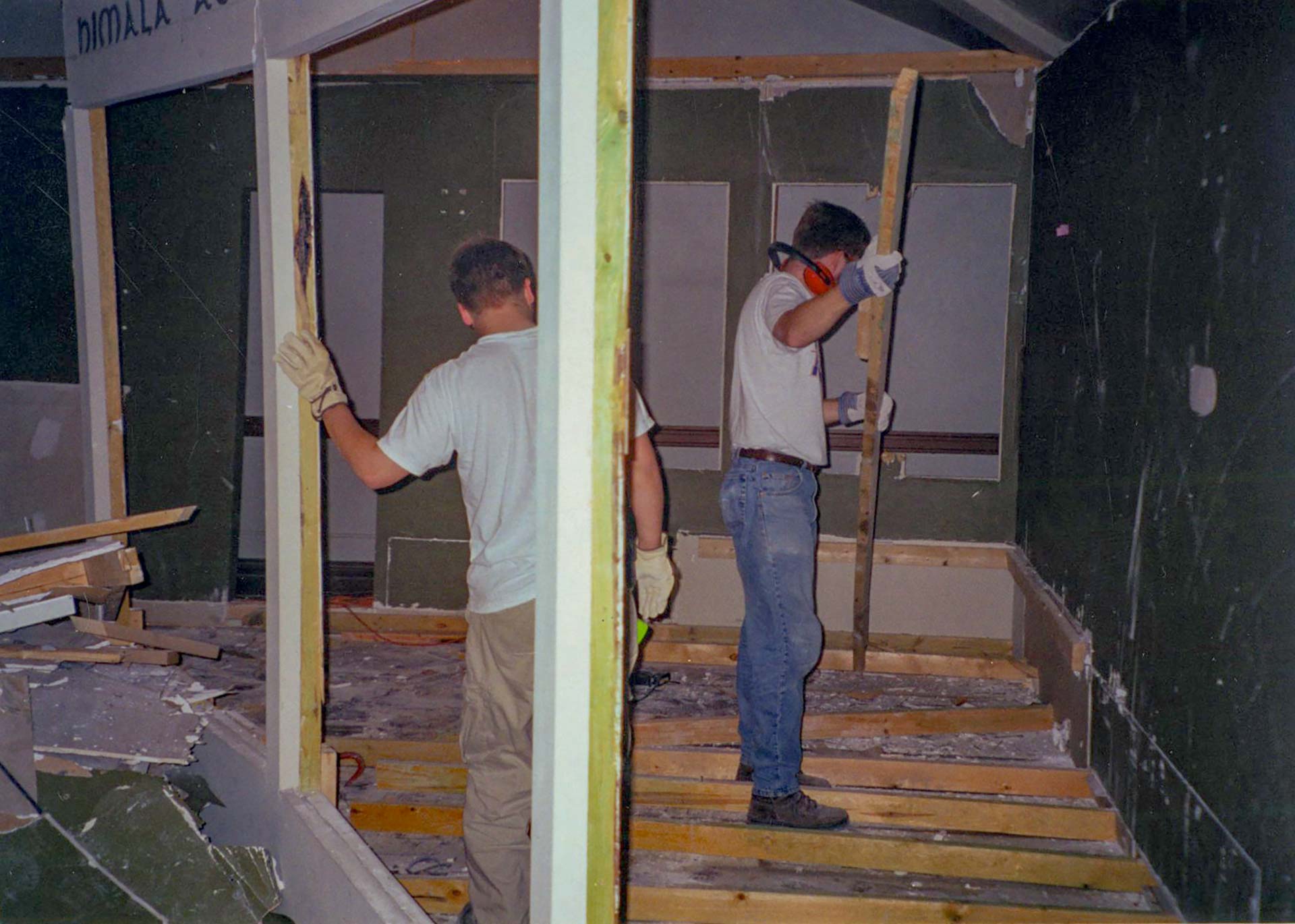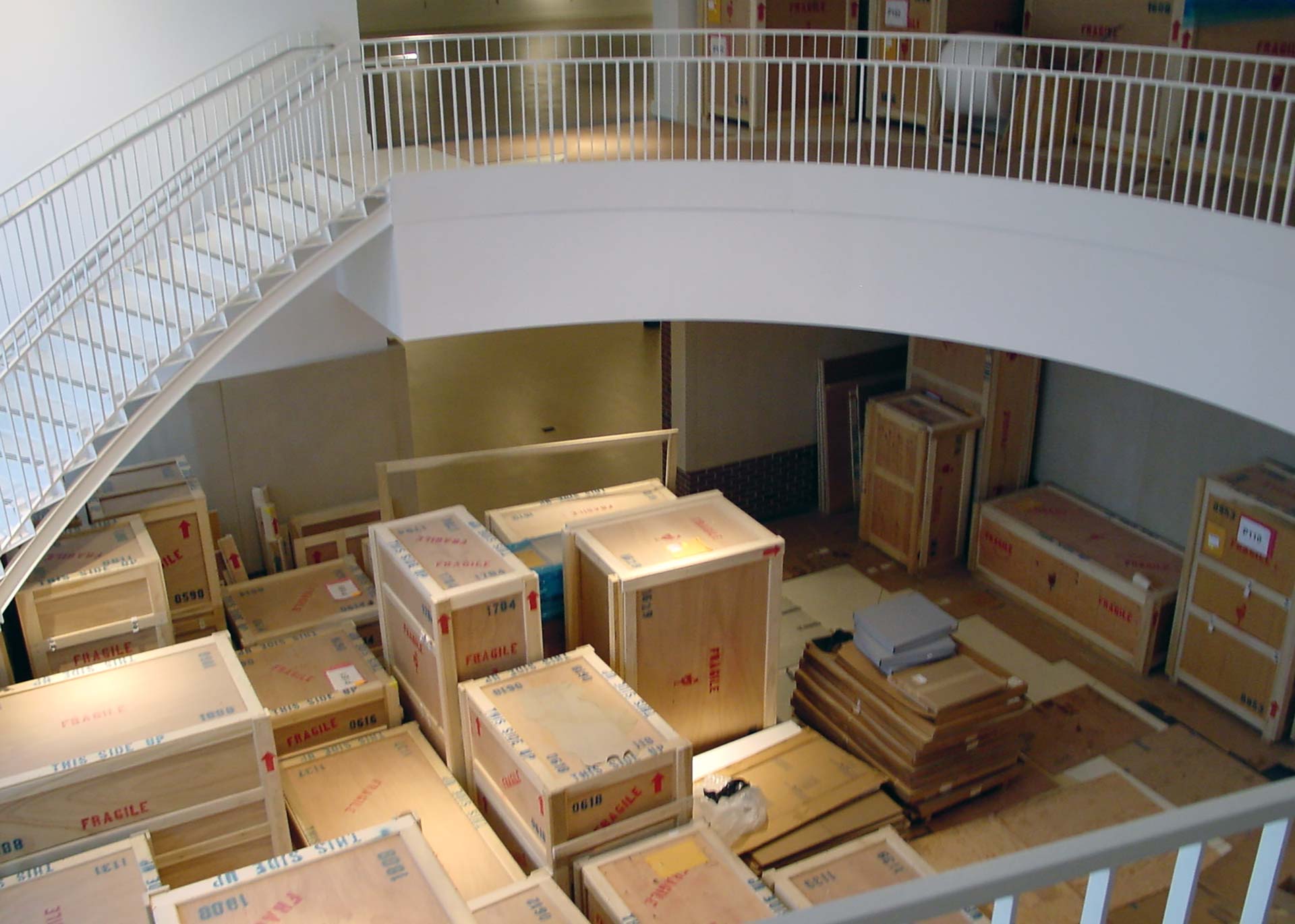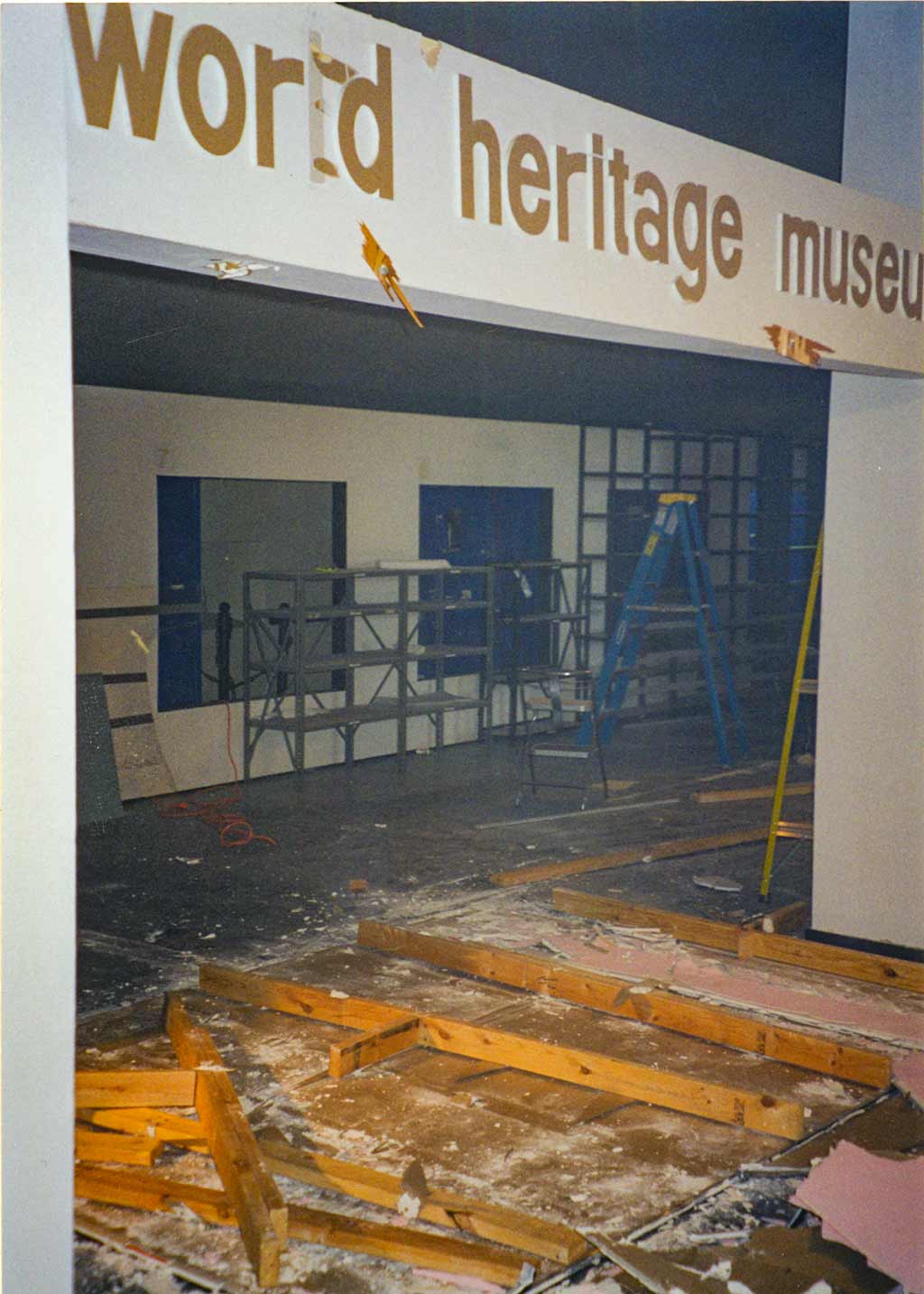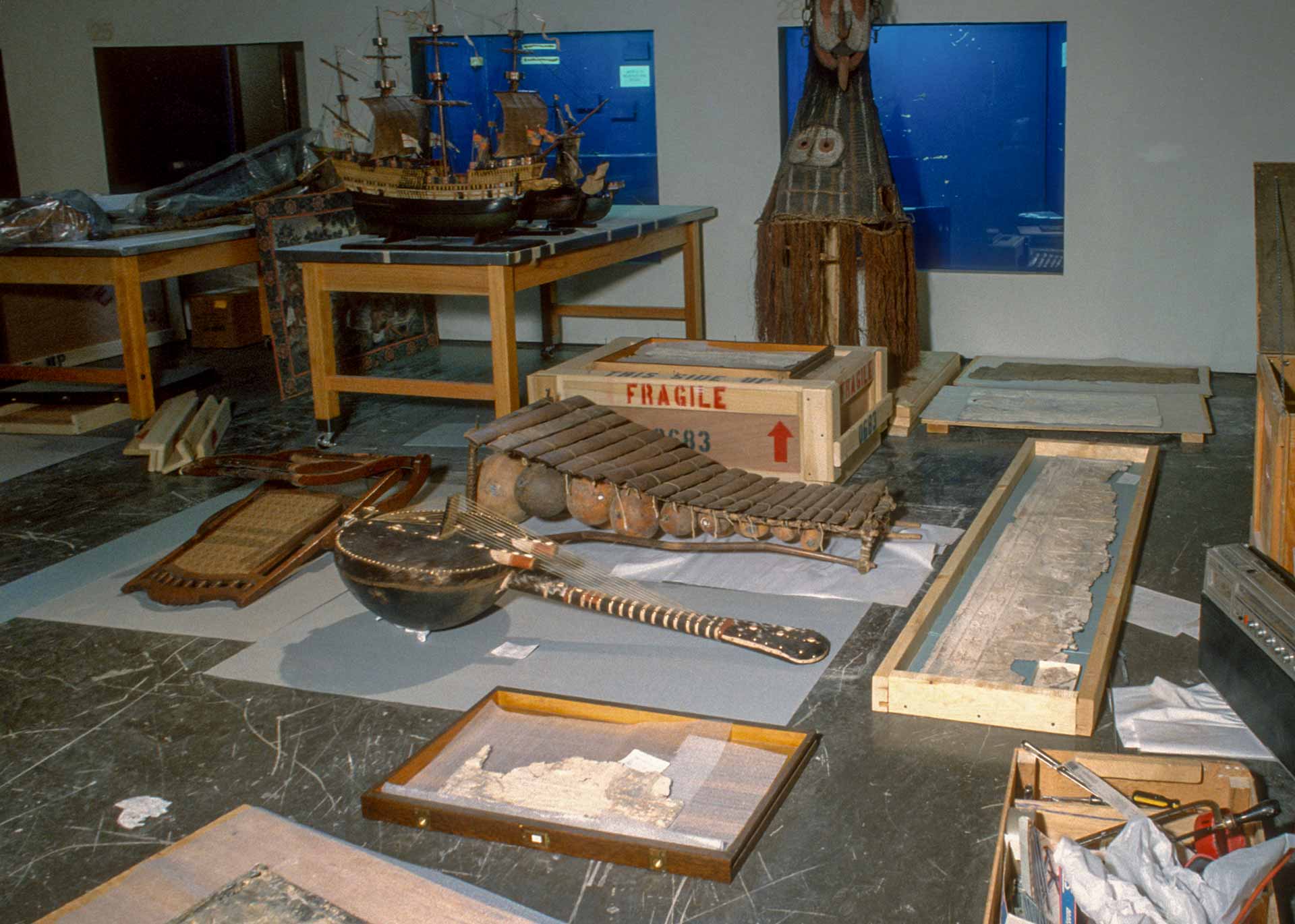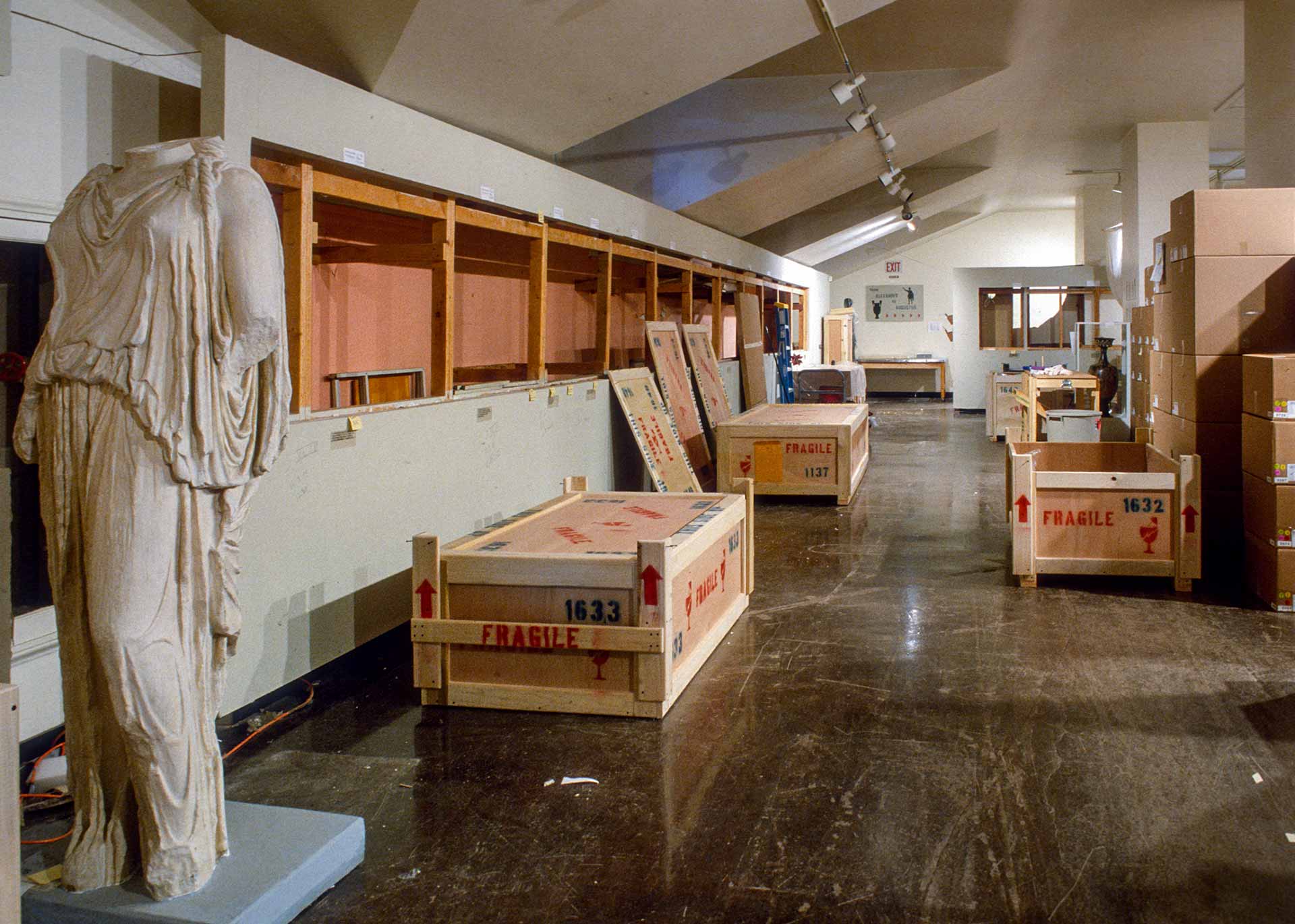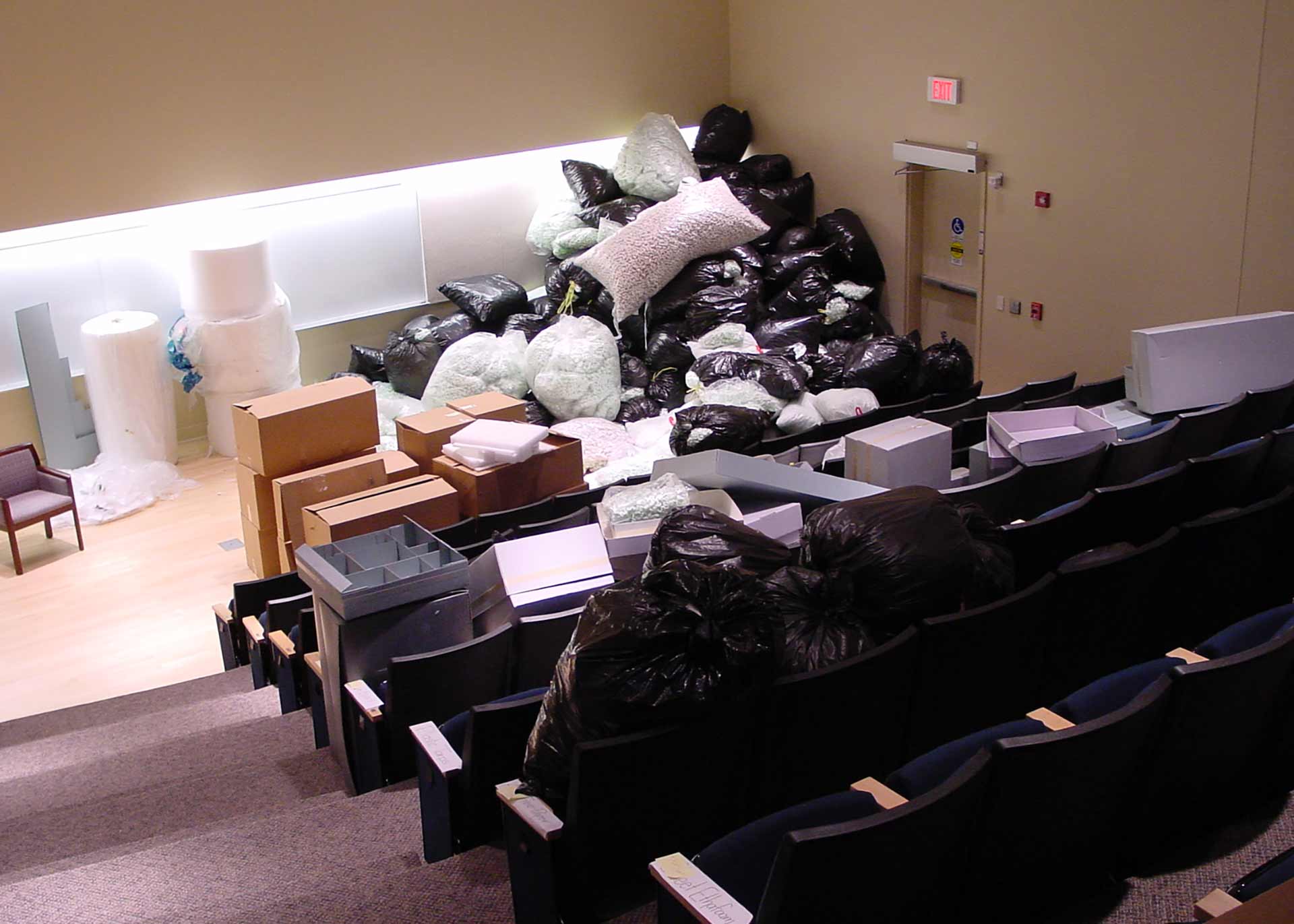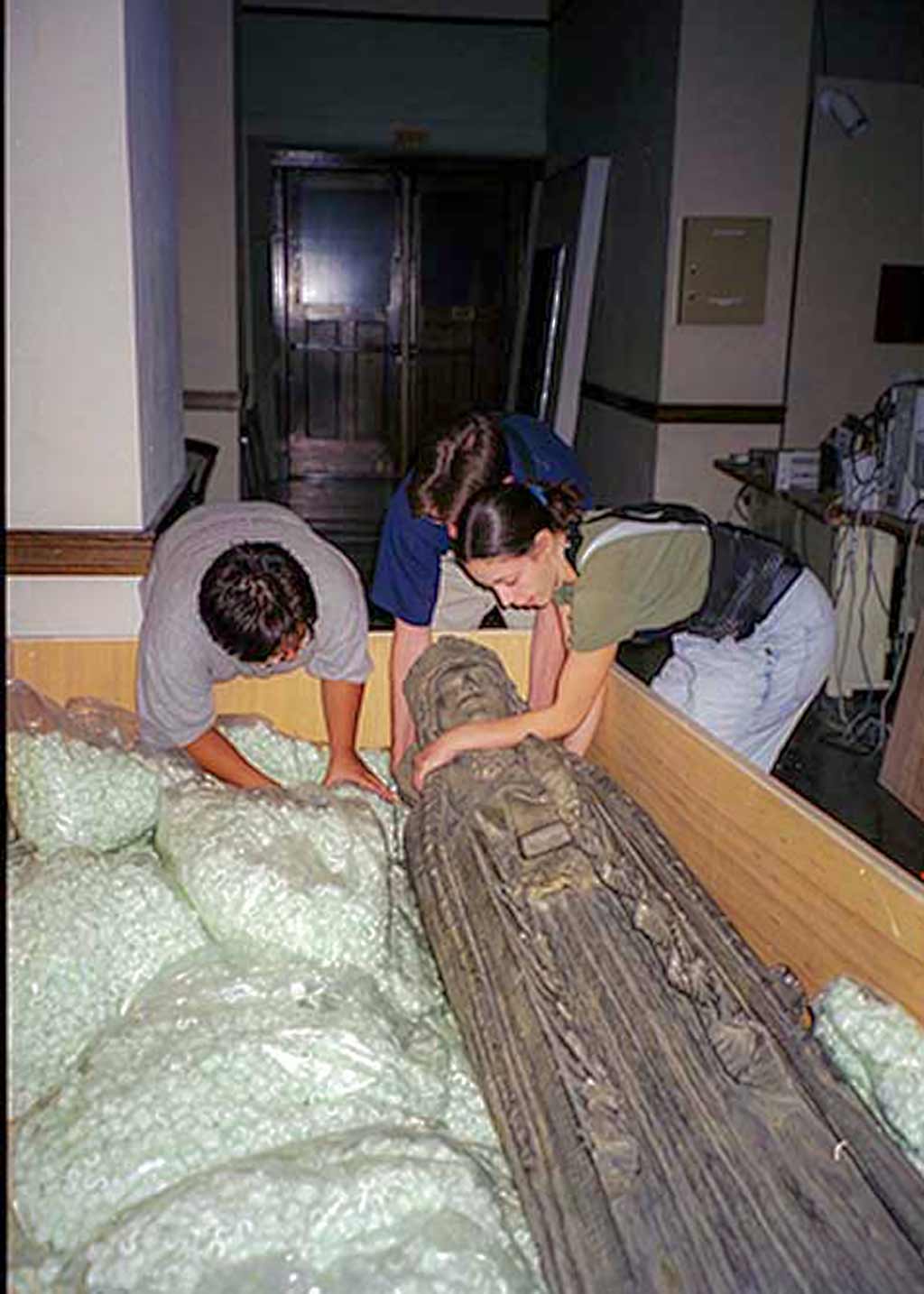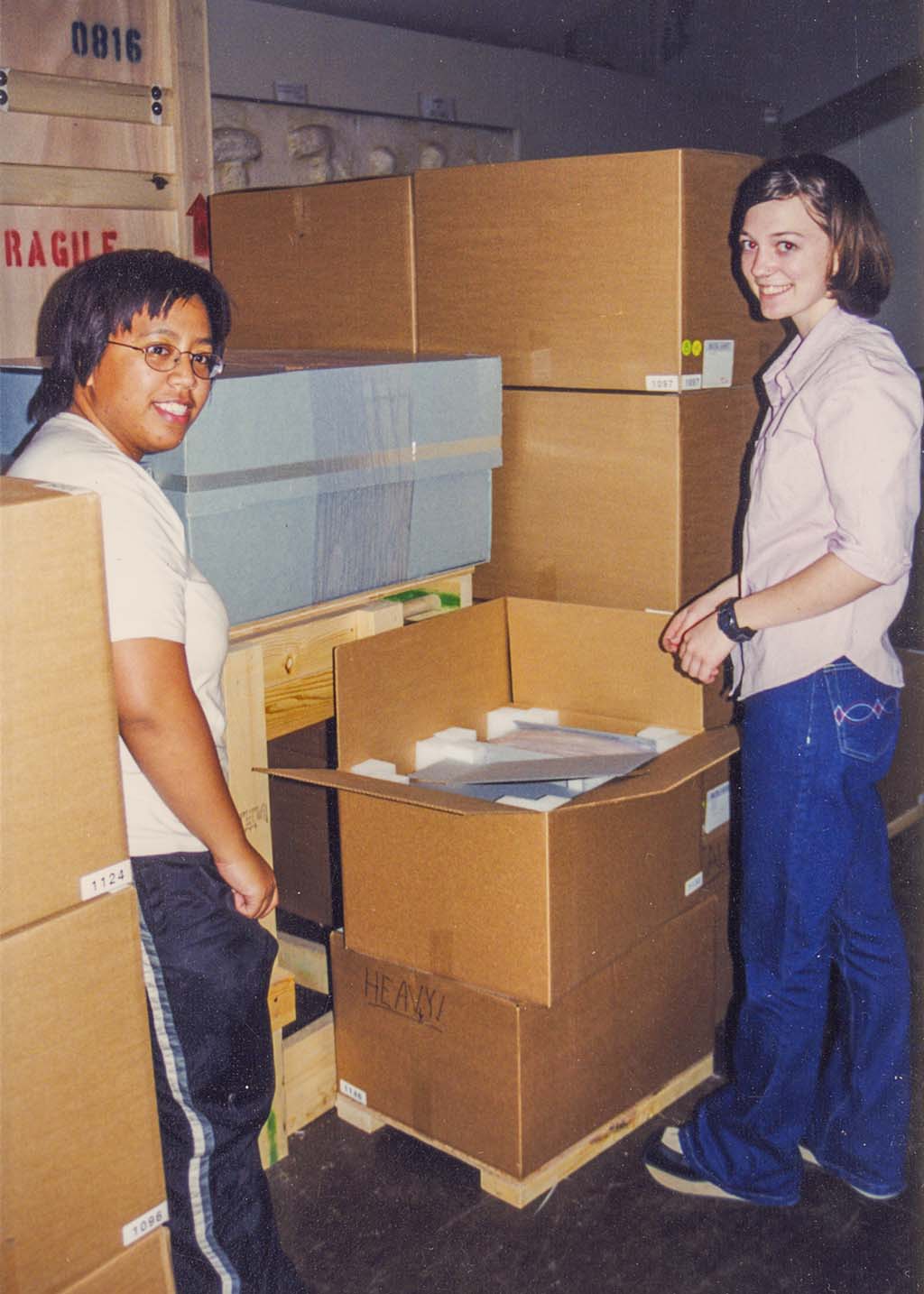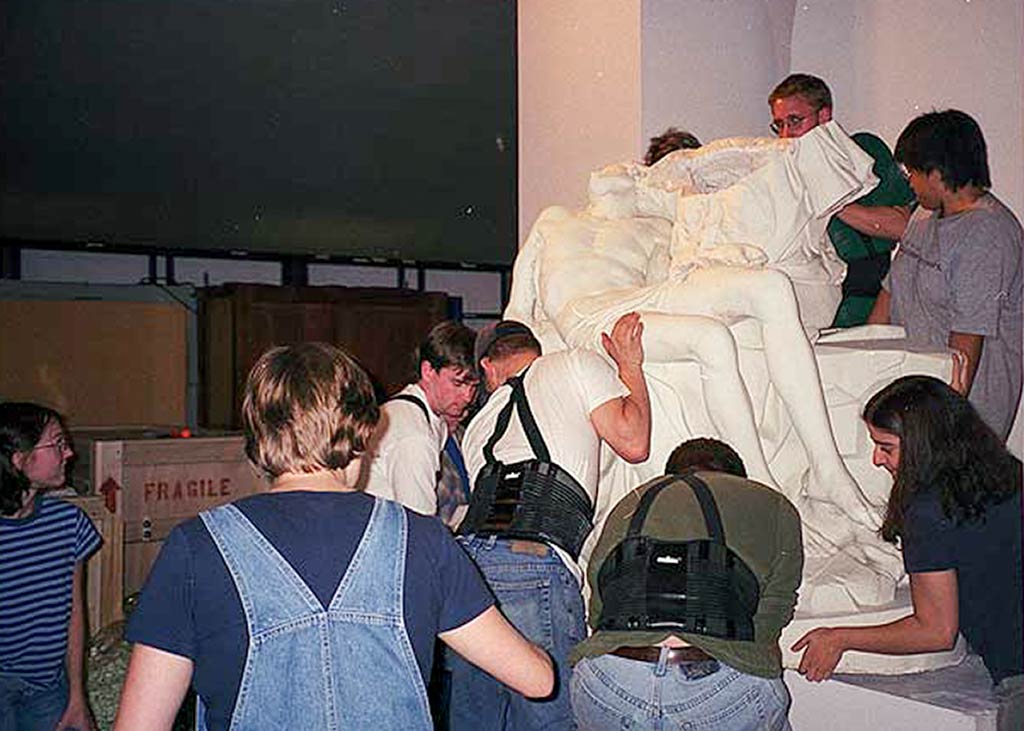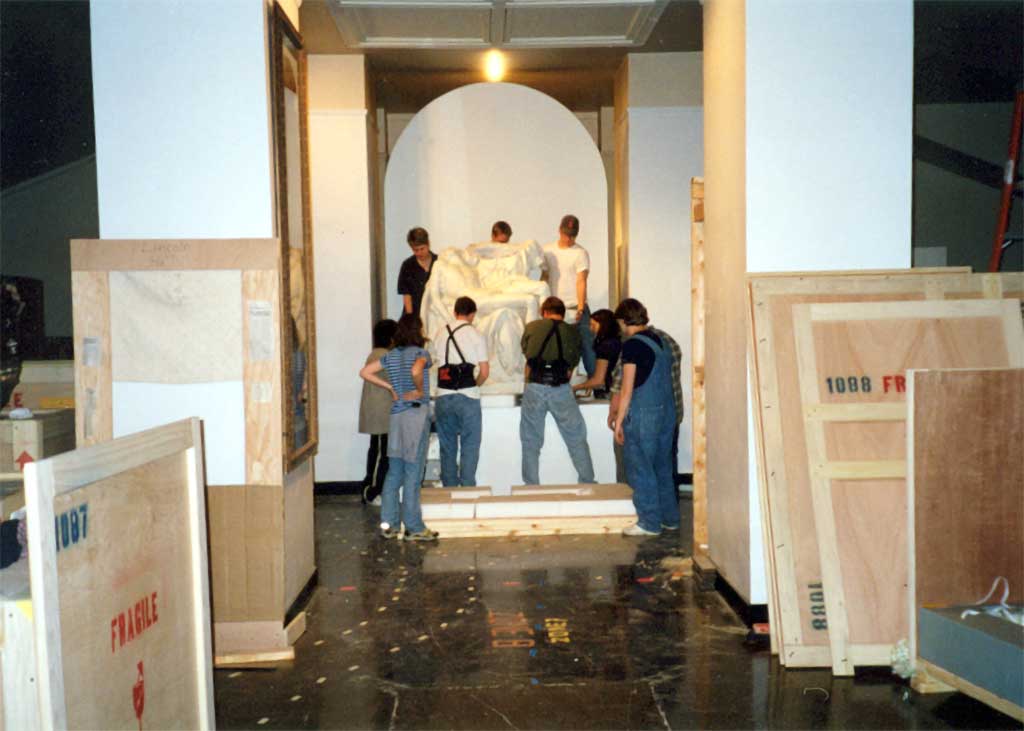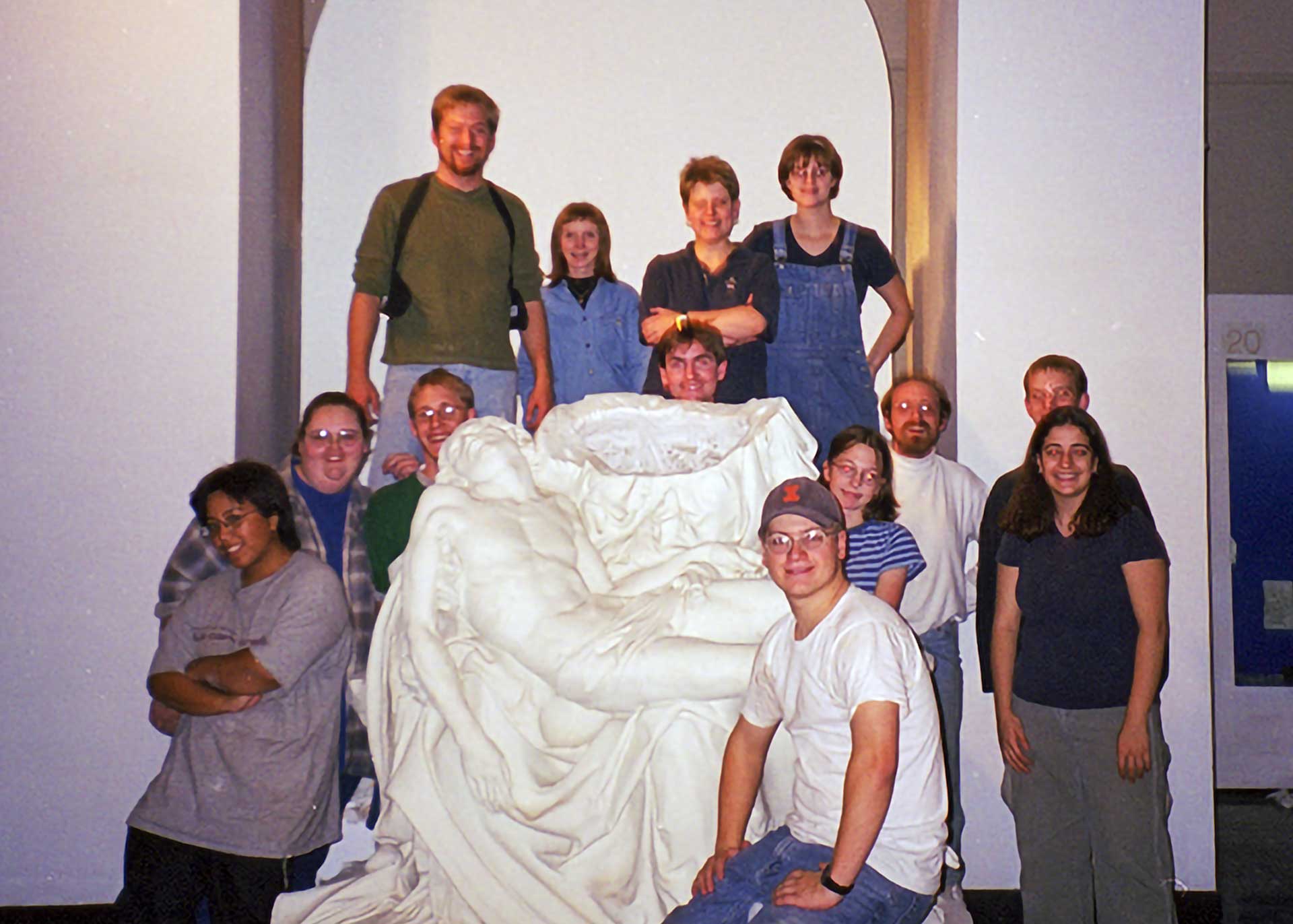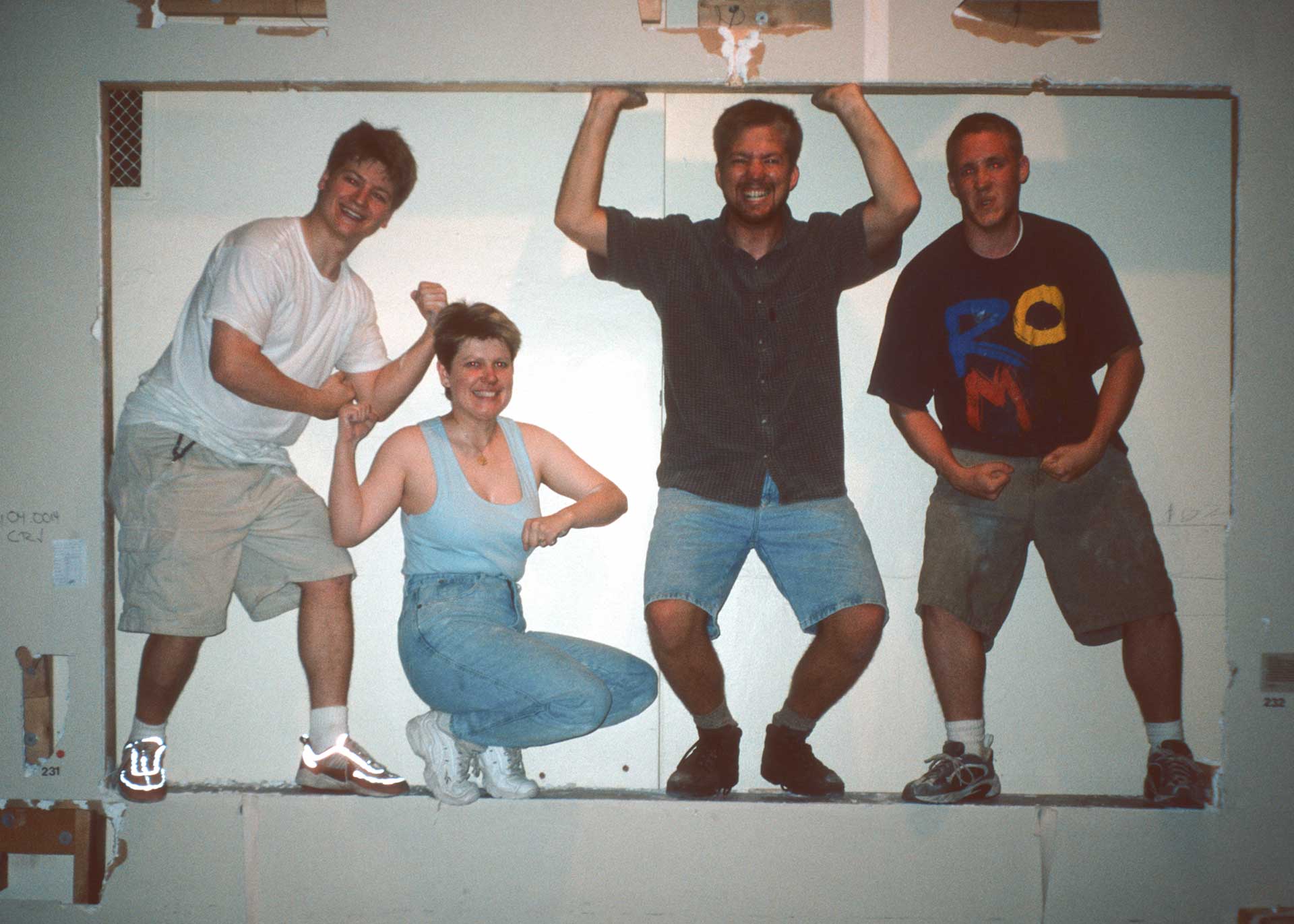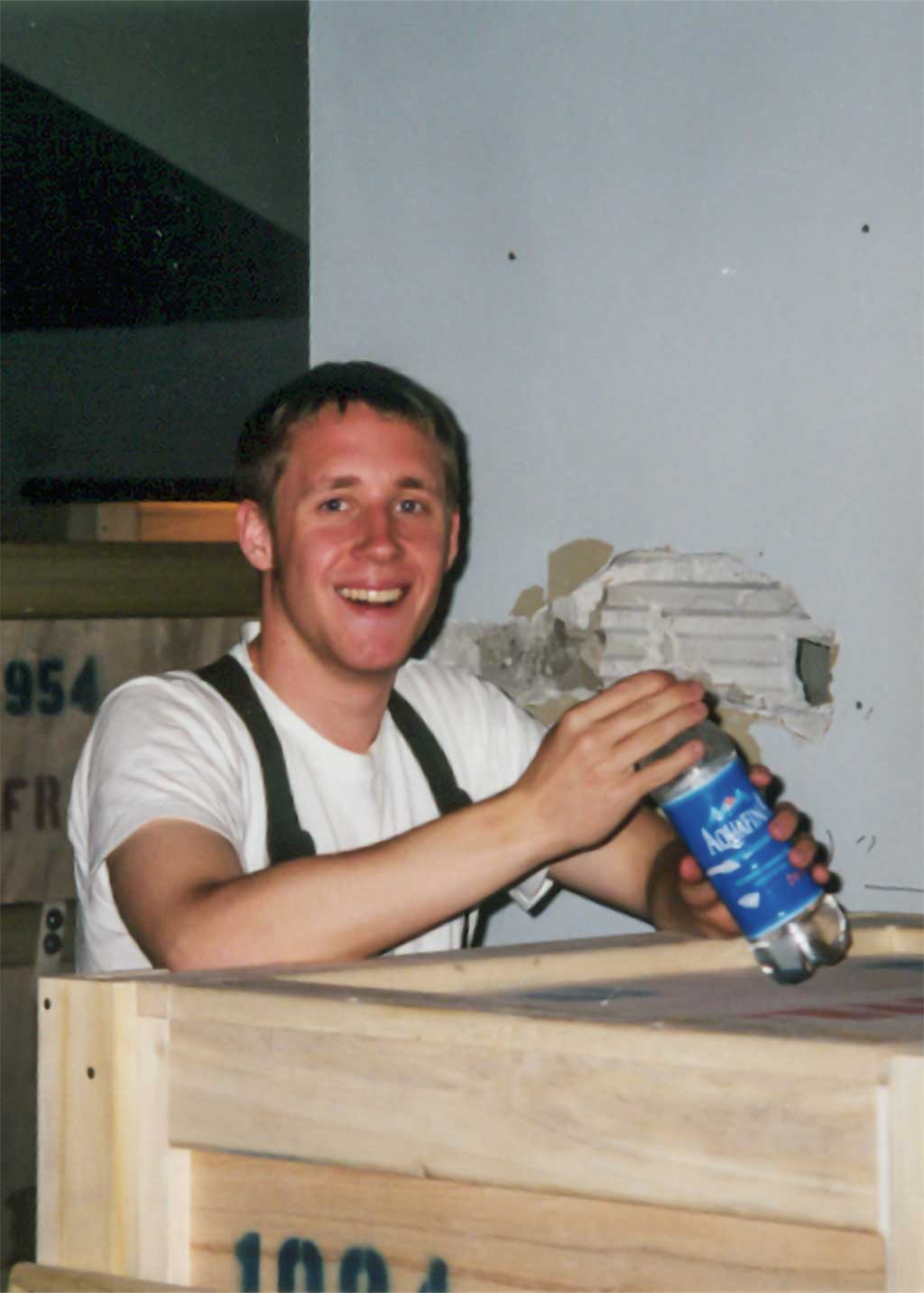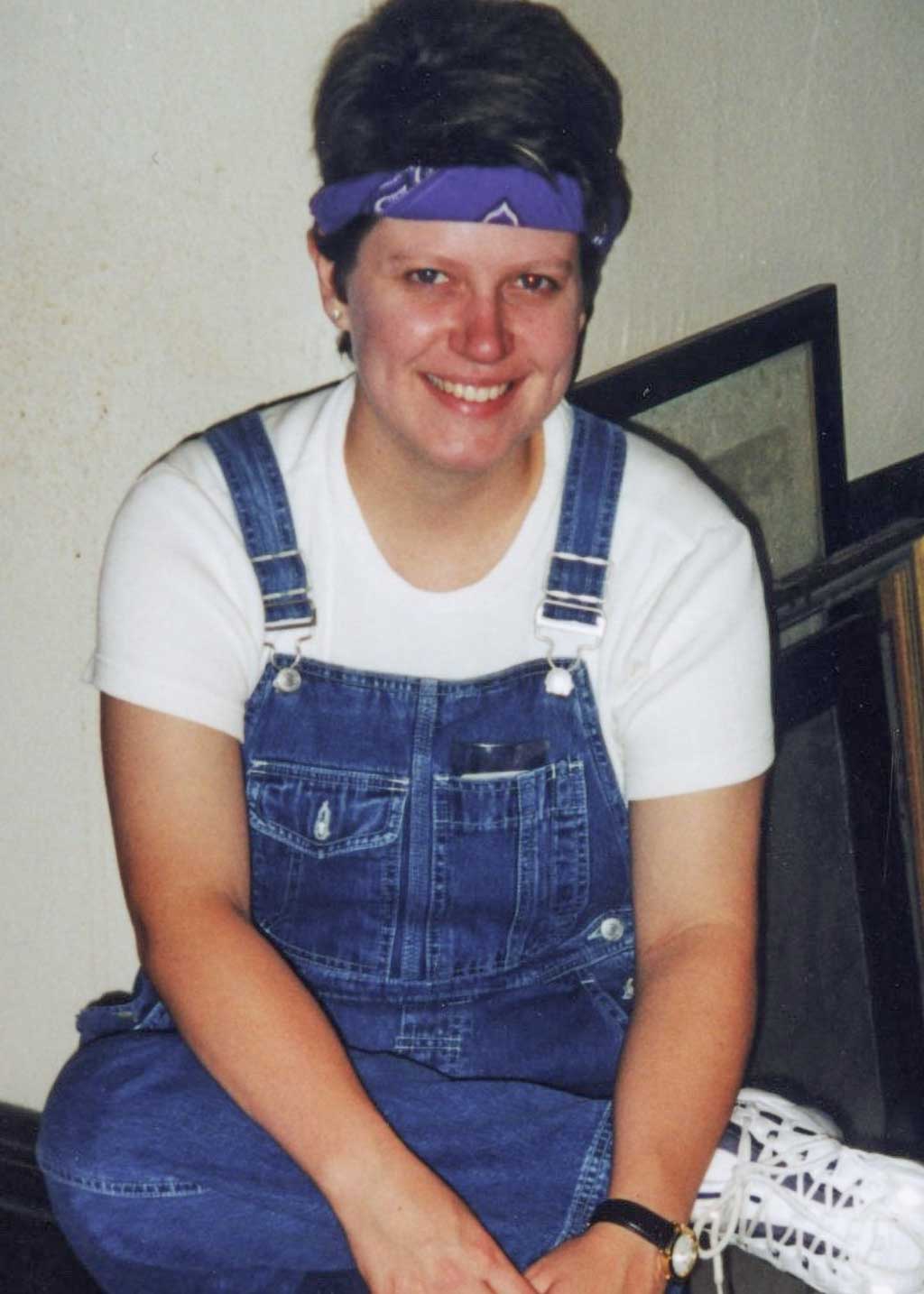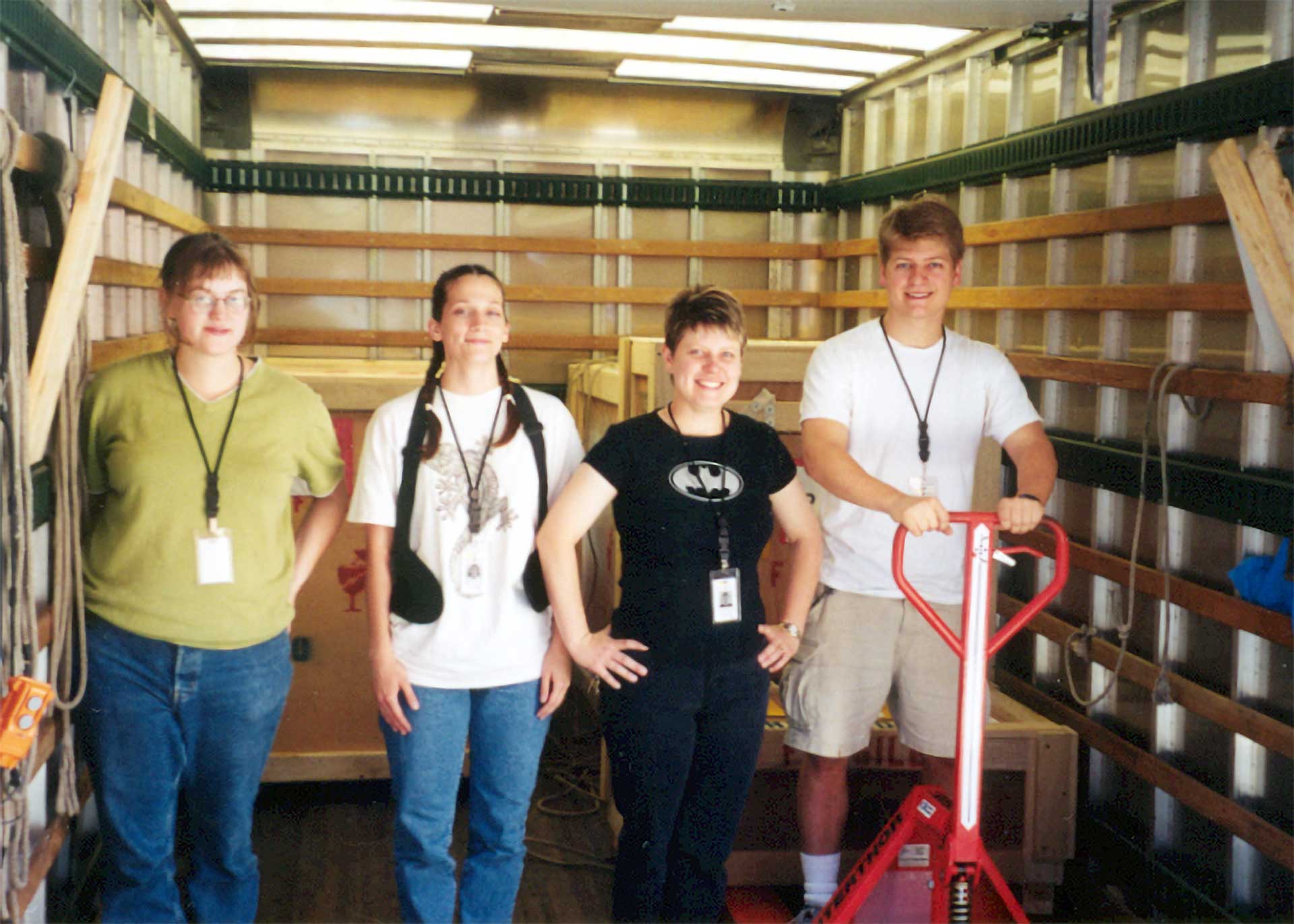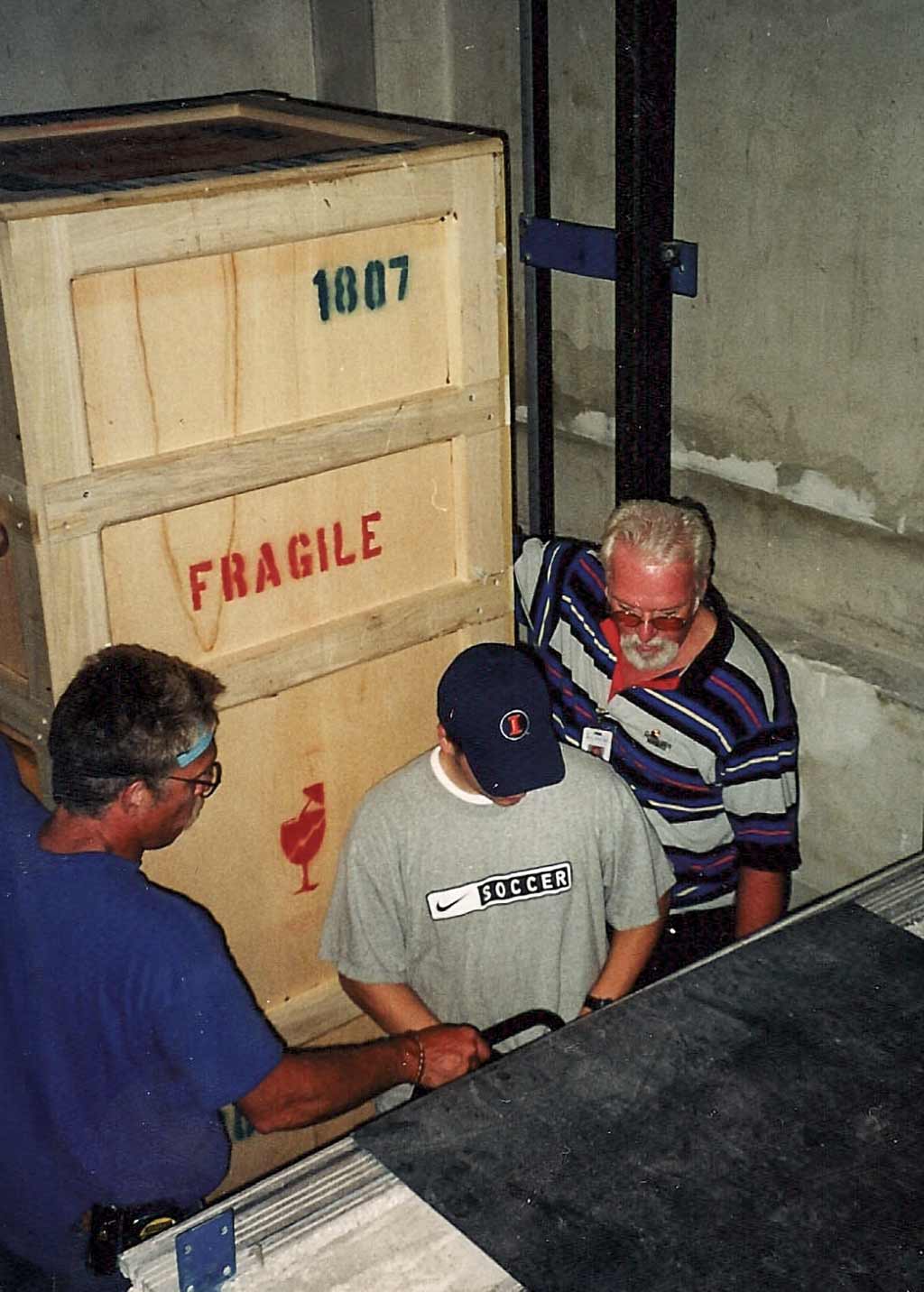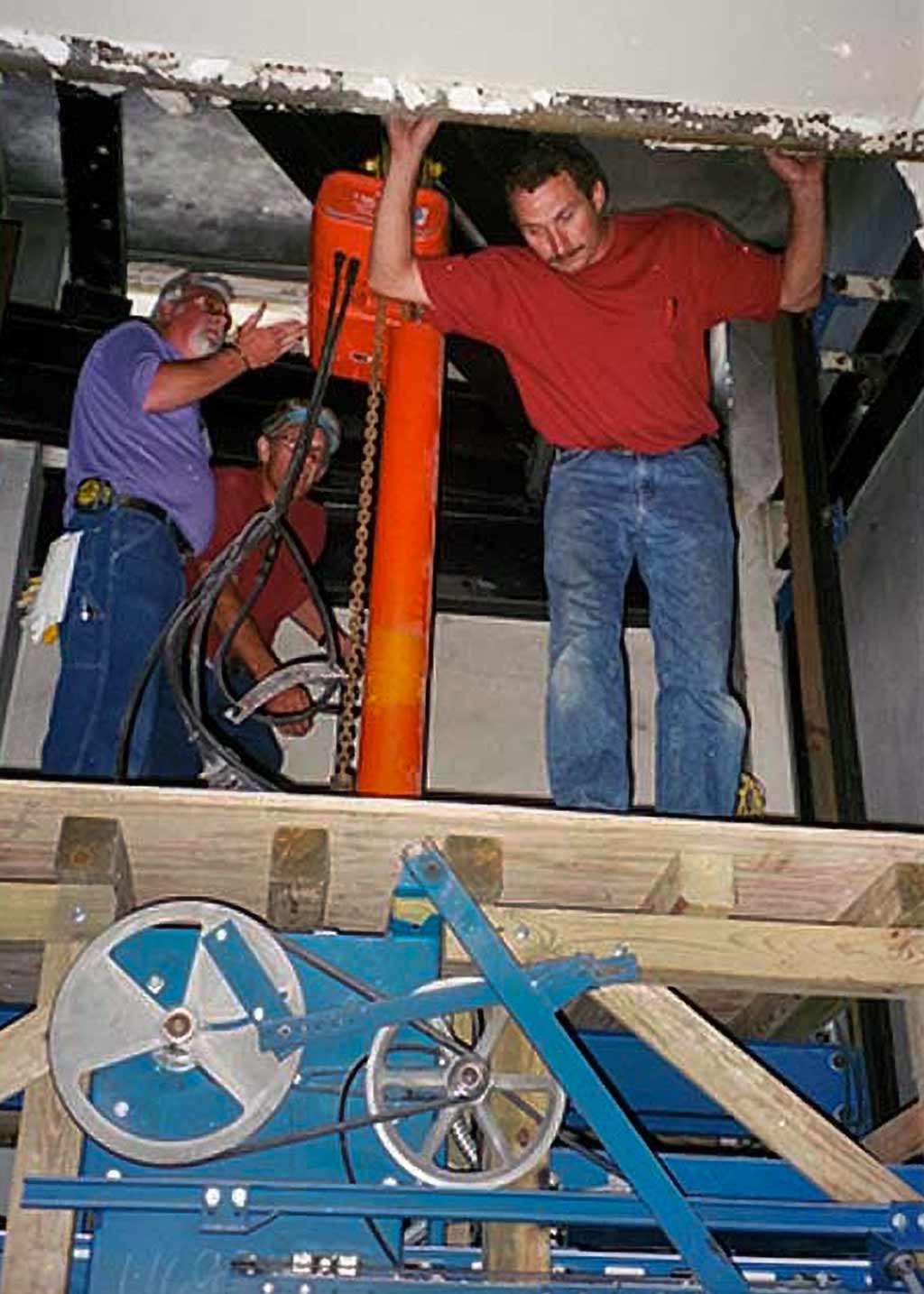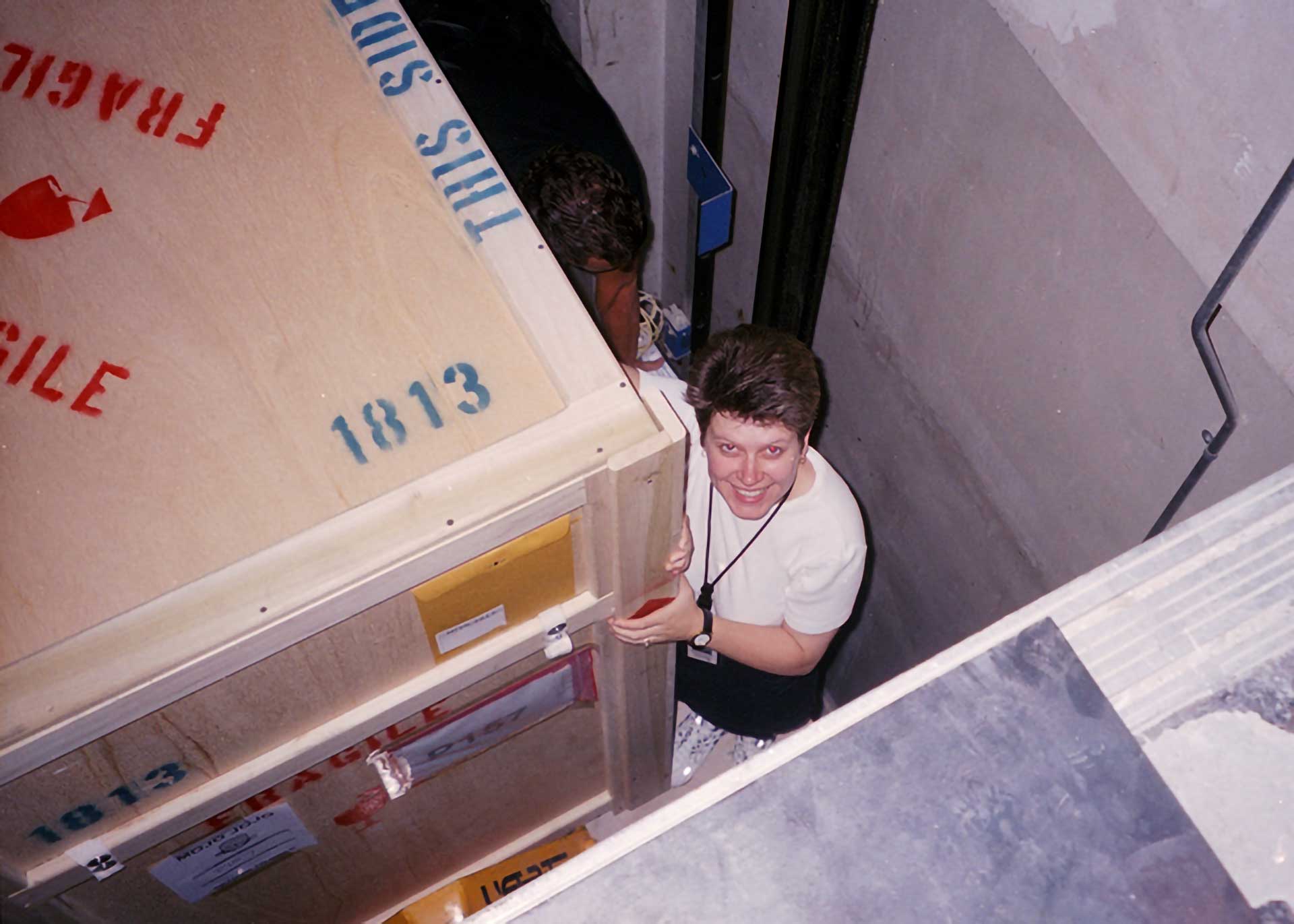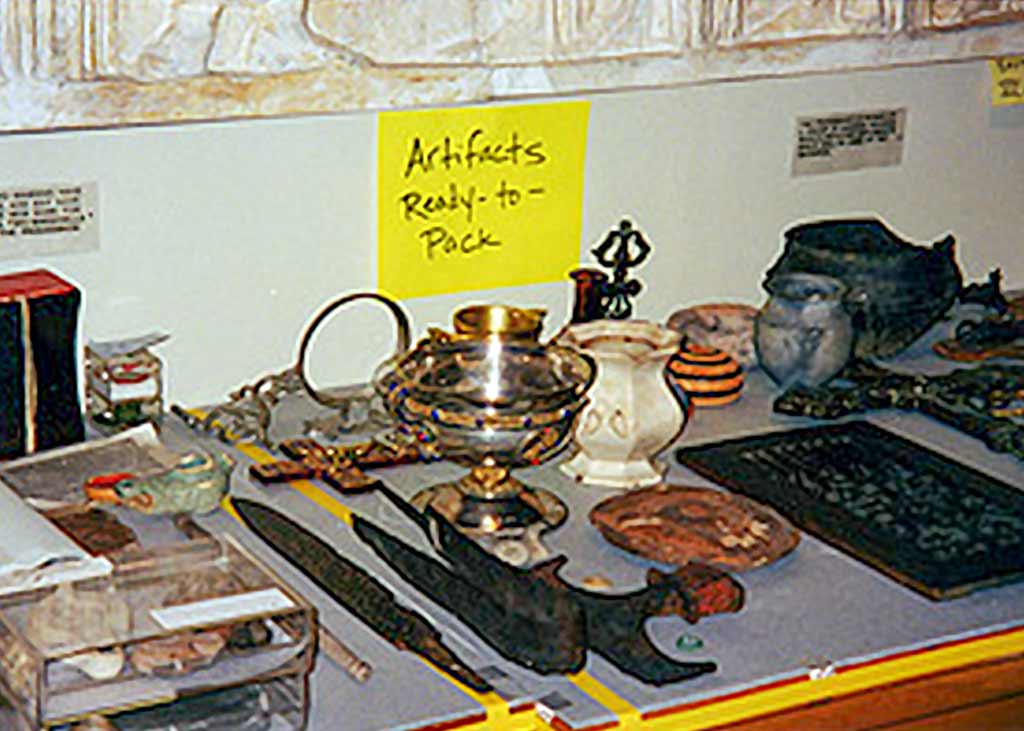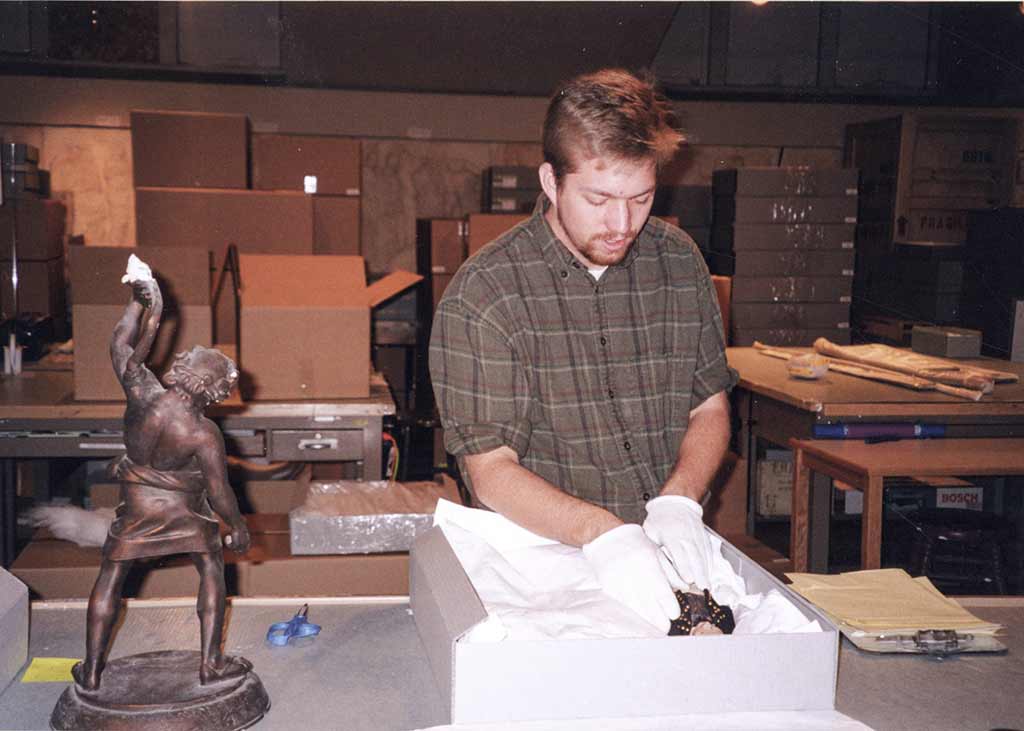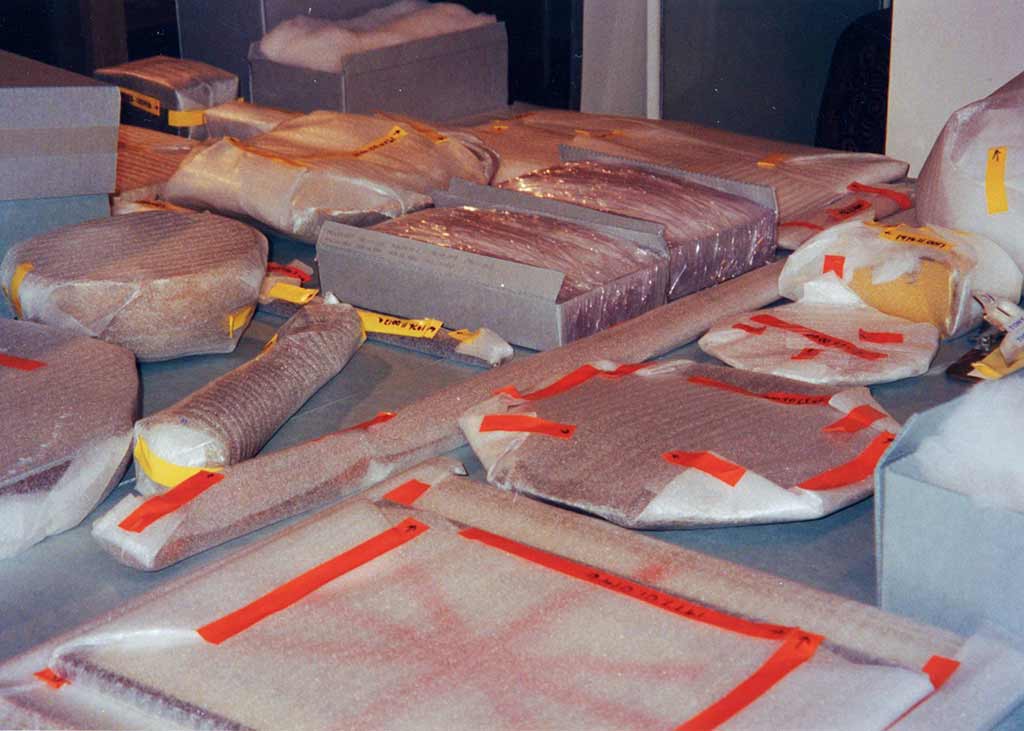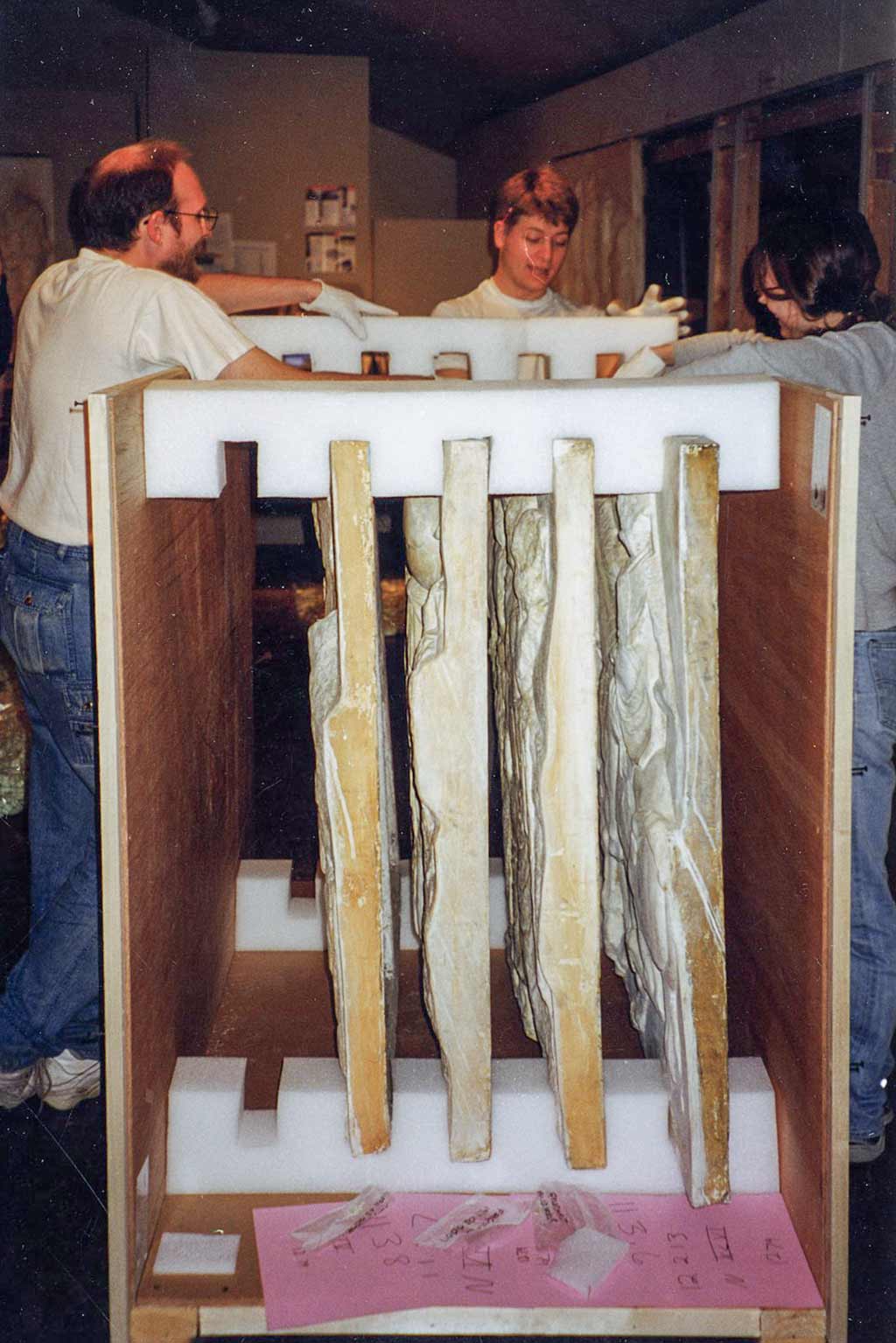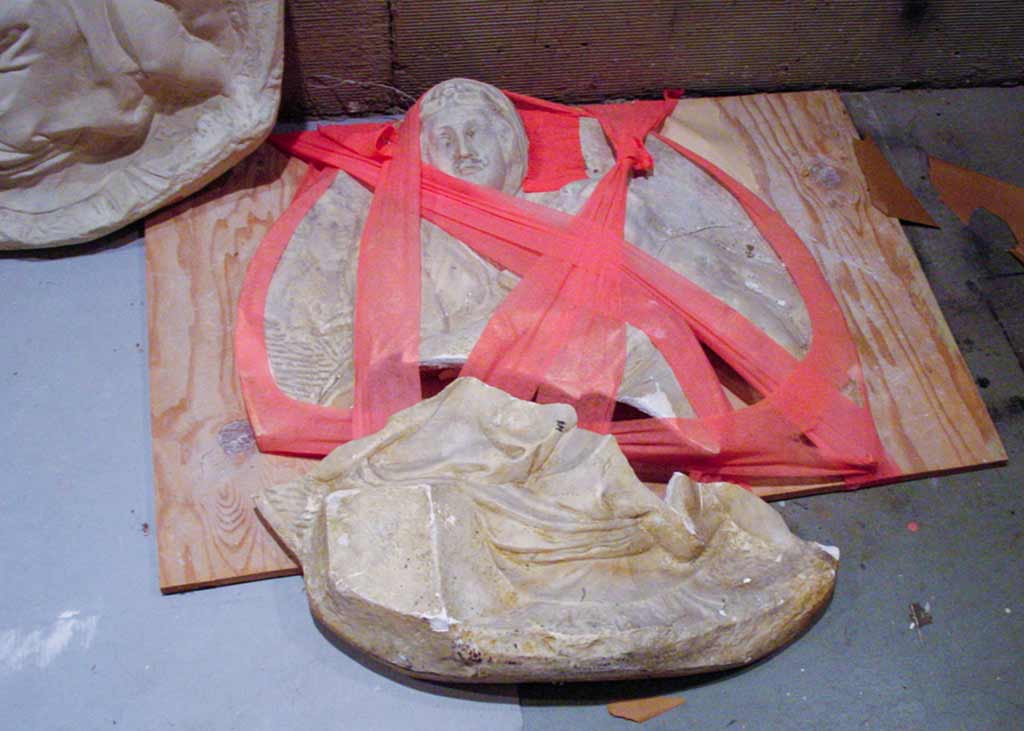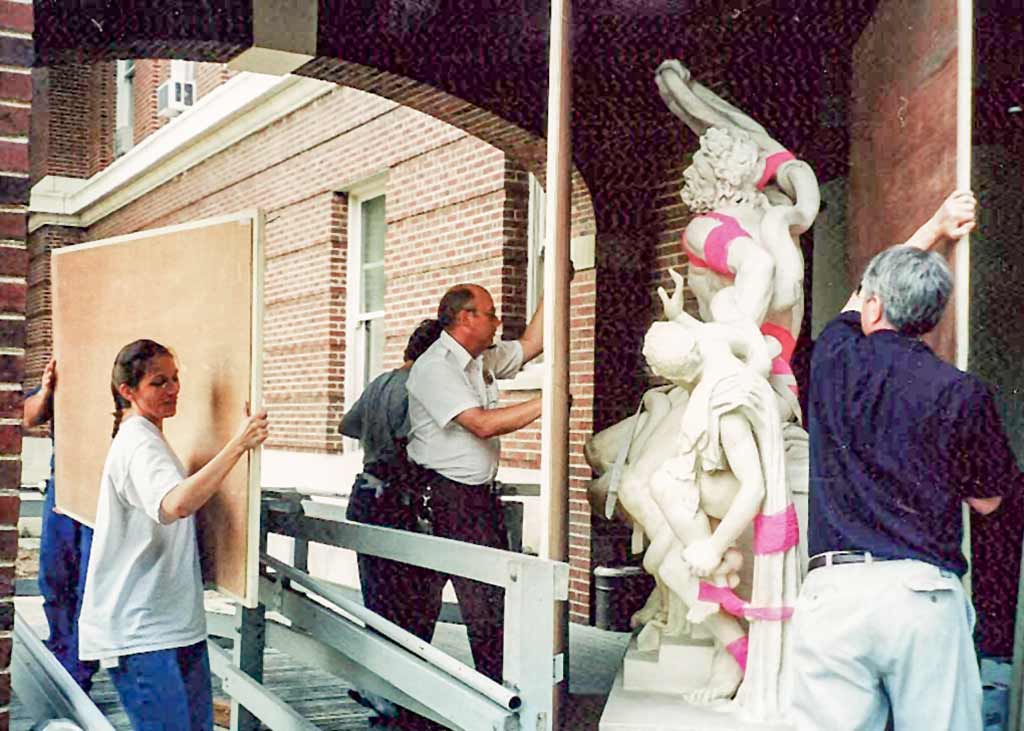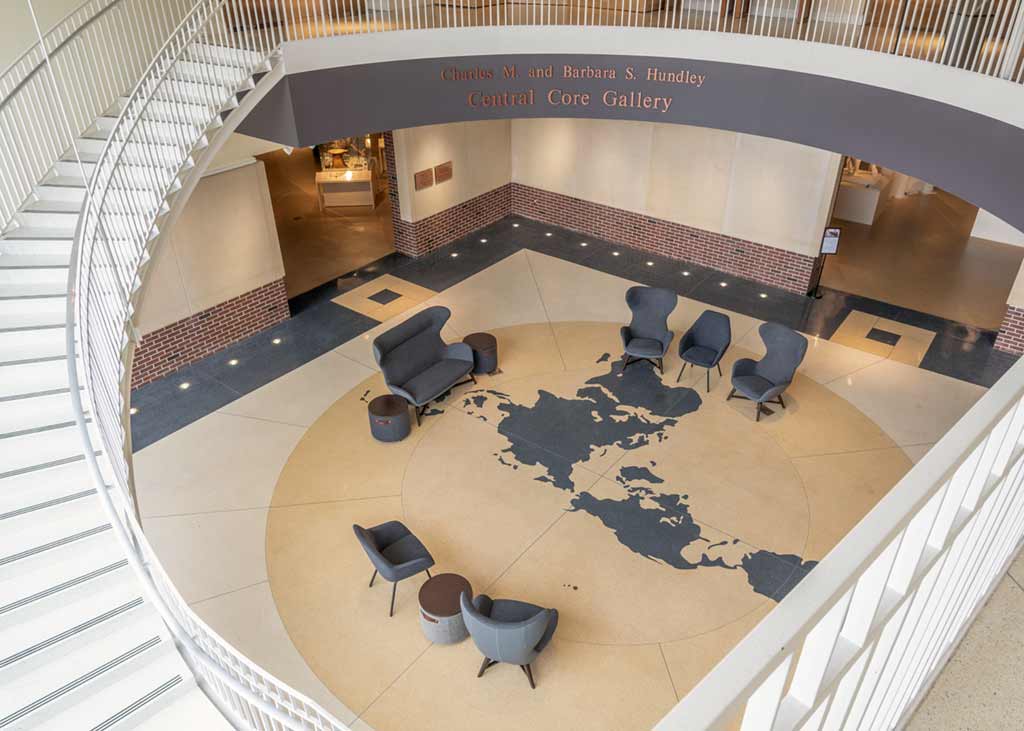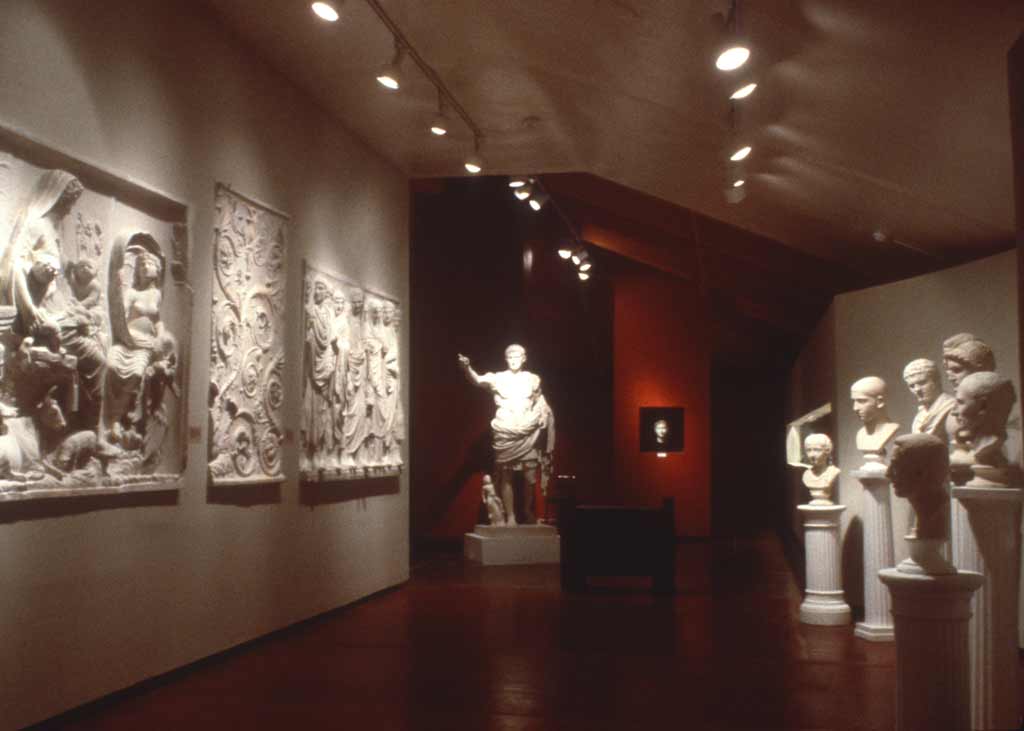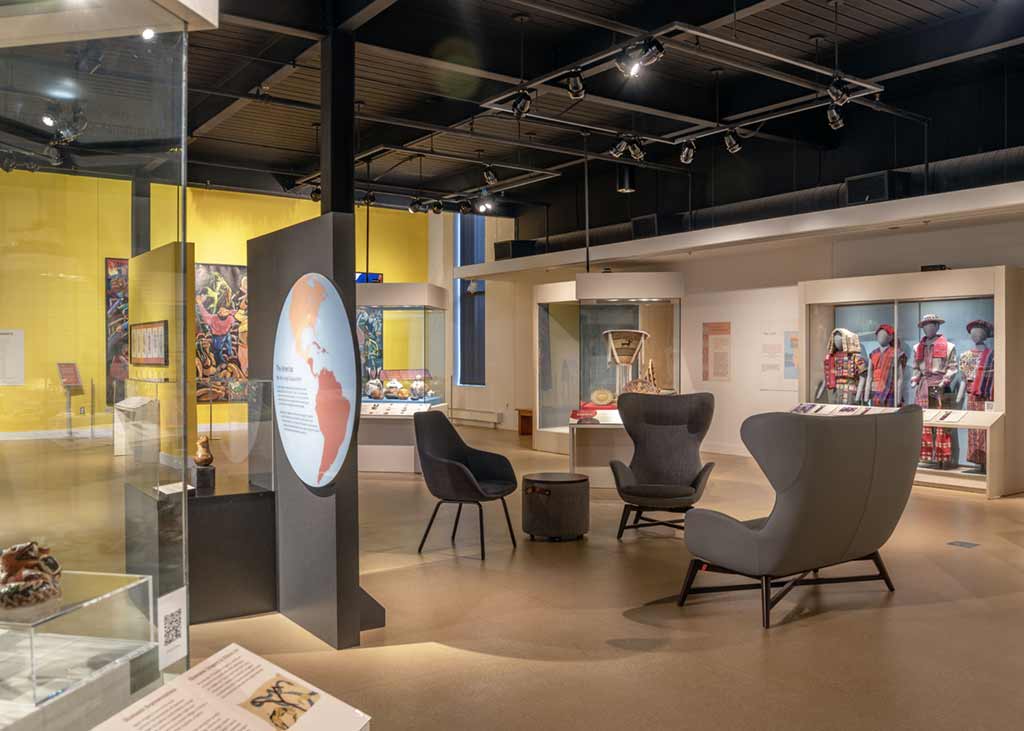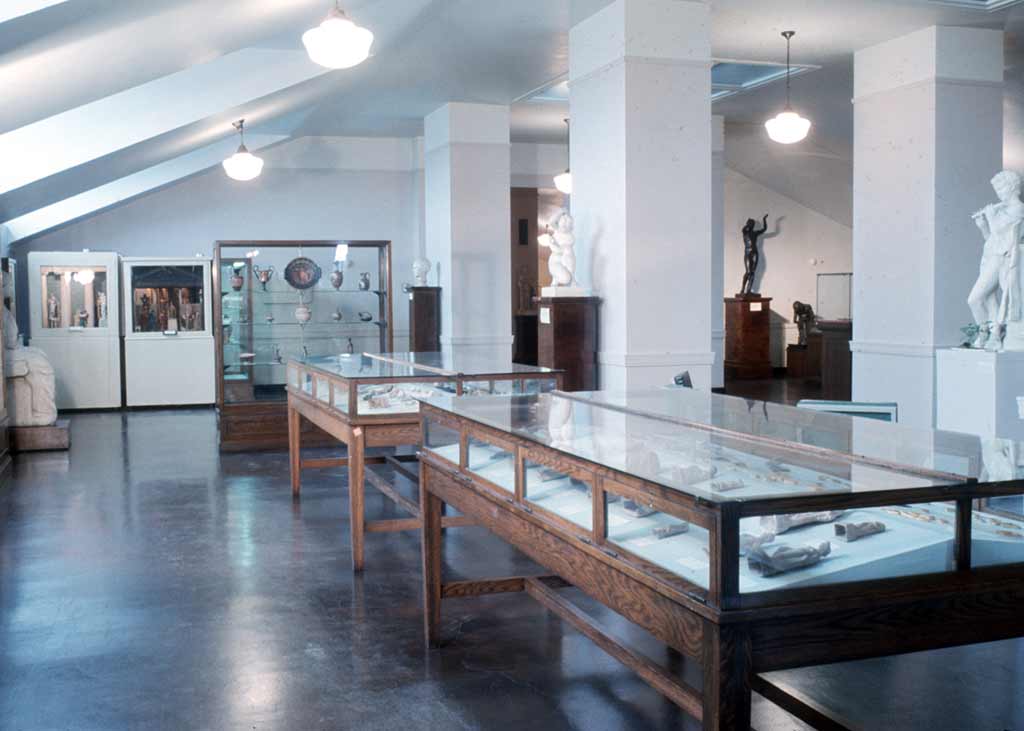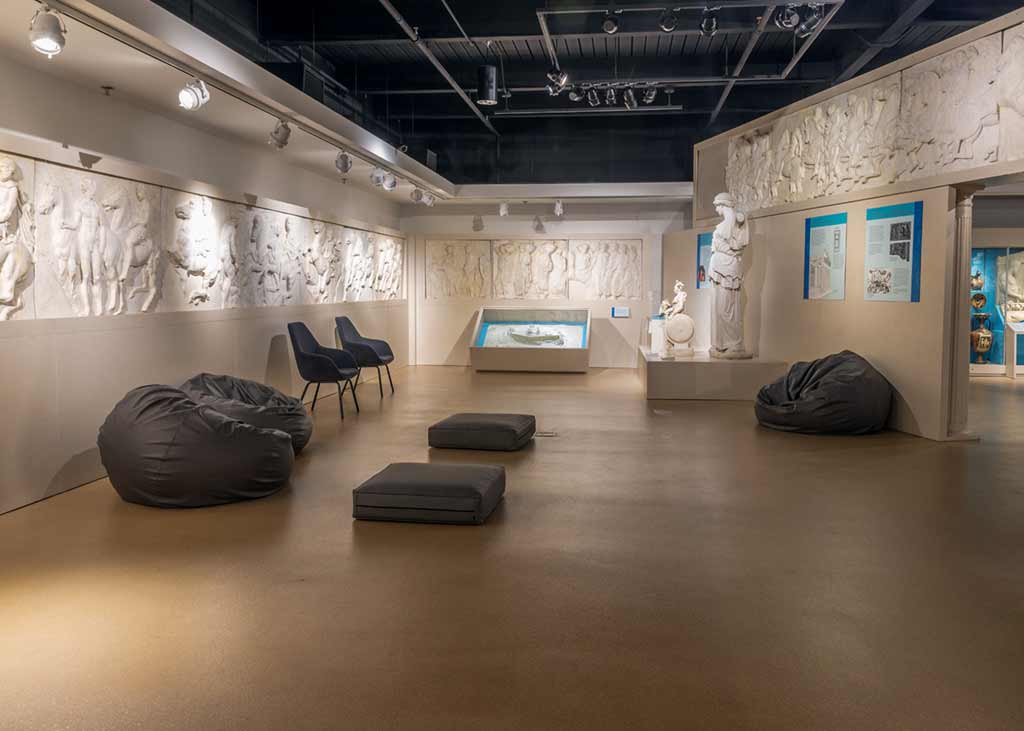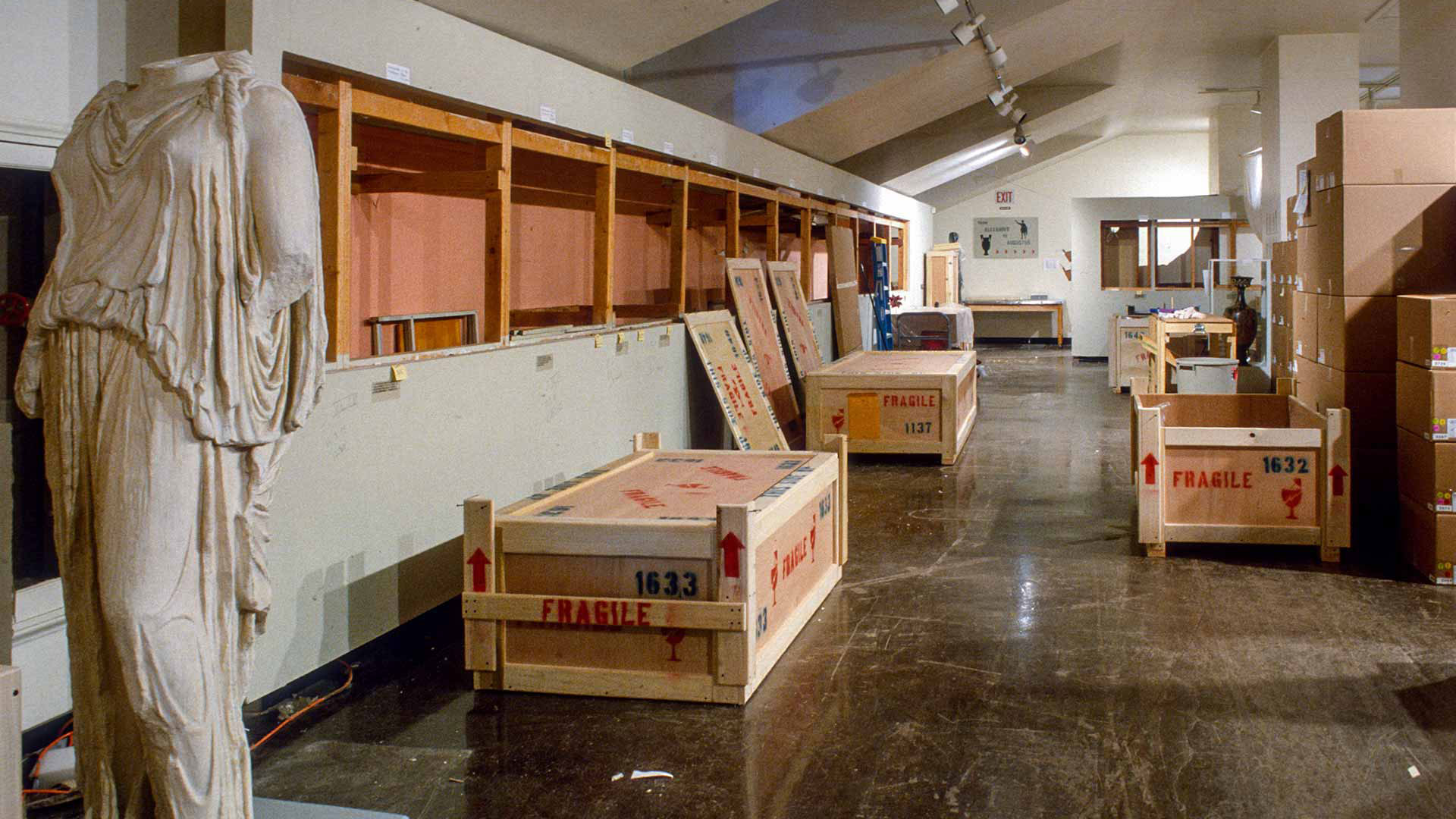
Let's look back 25 years to the move from Lincoln Hall to the Spurlock Museum
- Post Date: 7/25/2025
- Author: Nicole Frydman
- Reading Time: 6 minute read
In the summer of 2000, the museum team began the final phase of the transition from our old home in Lincoln Hall into the beautiful and brand new Spurlock Museum building we are housed in today. In honor of that 25th anniversary, we decided to take a look back at how massive an undertaking this truly was.
Here are some interesting tidbits:
Tidbit 1
The move in its entirety took over 5 years, with packing alone taking 2 and a half years! While some early prep work was possible while the museum was open and welcoming visitors, in the end the museum had to be closed to the public for nearly 5 years. During that time, staff kept education and community engagement a priority by doing outreach work with artifacts and belongings that could be easily and safely transported to other sites for exhibition and learning. But here’s some of what the public never saw:
Tidbit 2
A large amount of the work was done by part-time student workers who had little to no direct experience when first joining the team. During the move, we had around 8 full time employees, but we had approximately 40-50 part-time student workers! This meant that education and skill-building was a central core of this work, which allowed students to graduate with hands-on experience that gave them a leg up in the job market. Student workers have always been part of museum operations and continue to be critical to our work today. Here are some shots of students in action.
Tidbit 3
But not everyone who worked with us then went onto other roles. Three people who worked for the museum during this move still work for the museum today! They are: Christa Deacy-Quinn - currently our Senior Collections Manager who has worked here for 34 years, Jack Thomas - currently our Director of Information Technology who has worked here 27 years, and John Holton - currently our Assistant Collections Manager who has worked here 26 years, including starting as a part-time student worker during this move. While these three have been with us the longest, they aren’t the only long-term employees. And we like to think this speaks to the culture we’ve created here, shows how deeply our employees care about and are committed to this work, and contributes to why we can deliver for the community in high quality ways.
(Note that we have no photos of Jack because he was the person taking all the photos. So in a way, he’s in all of them!)
Tidbit 4
Many of the crates for the larger pieces couldn’t fit in the Lincoln Hall elevators. So in order to get things into the space, they were carried in pieces and then assembled once inside. To get them down and out of the building was a bit more complicated: they had to ride on top of the elevator! This ended up being a better option than the other proposed idea: to cut a hole in the building and use a forklift to take things out of said hole.
Tidbit 5
Considering how arduous this process was, and how fragile many of the artifacts and belongings are, there was a remarkably high success rate. Out of 35,000+ items, less than 10 were broken and none were lost. None! An astounding record for a move of this scale!
Tidbit 6
Because the internet wasn’t the same kind of tool it is today, resources and information for this gigantic project simply weren’t available. You couldn’t just Google how to pack an ancient artifact and get a custom built crate shipped overnight. Instead, the team had to travel to experts who’d done similar projects to learn about what they had done, and partner that with their own creativity in order to design processes, create packaging, and use materials not intended for this kind of use. The pink tape you see here? That’s veterinary tape that’s typically used on large animals like horses. Just one example of the many creative solutions the team came up with! (Note that it comes in other colors. Christa chose pink because she liked it and thought it would be fun and happy.)
Today
Now that we’re all moved in and have been in our new building for a couple decades, it can be hard to remember how different the museum was back then. We’re so proud of the work that was done in the early years, the way we have always honored our commitment to engage student workers and hold education at the core of everything we do, and of the way we’ve grown to be the museum we are today. We can’t wait to see what the future holds, and we’re glad to have you all along for the ride with us!
-
- Share:
- Subscribe to Newletter
- Giving
